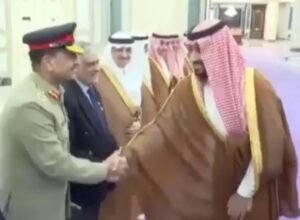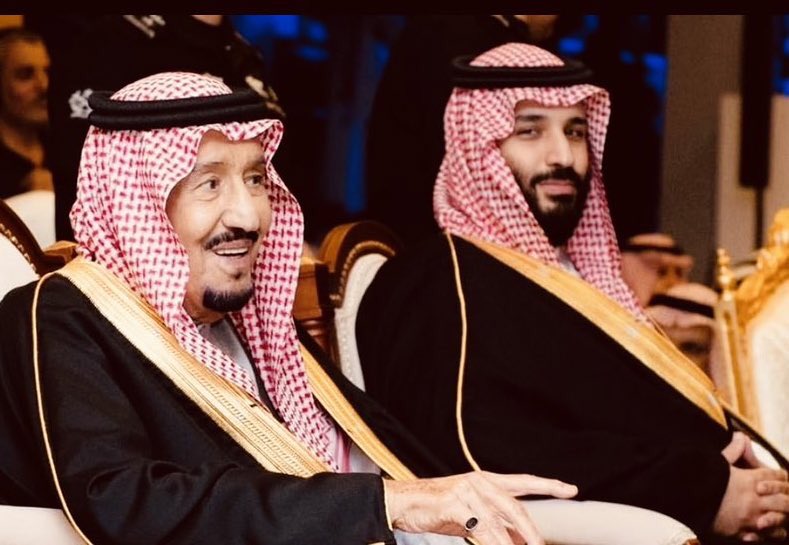
By S. M. Hali
Each year on September 23, the Kingdom of Saudi Arabia celebrates its 95th National Day, commemorating the unification of the Kingdom in 1932 under the visionary leadership of King Abdulaziz bin Abdul Rahman Al Saud. What began as a bold campaign to consolidate disparate tribal regions into a single polity has, in less than a century, transformed into one of the most influential states in the Muslim world and a pivotal player in global geopolitics.
The Kingdom’s journey has been marked by resilience, faith, and foresight. From the discovery of oil in the 1930s, which propelled it onto the world stage, to its stewardship of the Two Holy Mosques, Saudi Arabia has balanced its religious responsibilities with its economic and political ambitions. Today, under the leadership of King Salman bin Abdulaziz and Crown Prince Mohammed bin Salman, the Kingdom is pursuing Vision 2030, an ambitious roadmap to diversify its economy, modernize society, and secure its place as a global hub of innovation and investment.
Witnessing Resilience in 1991
This scribe had the honour of serving as Pakistan’s Naval and Air Attaché at the Embassy of Pakistan in Riyadh during the Gulf War of 1991. Those were tense days when Saddam Hussein’s forces had invaded Kuwait, and the spectre of Iraqi aggression loomed over Saudi Arabia. Riyadh and Dhahran came under attack from Iraqi Scud missiles. I vividly recall the sirens wailing, the scramble to shelters, and the palpable anxiety among citizens and expatriates alike. Yet, what stood out most was the resilience of the Saudi people and the calm determination of their leadership.
Despite the looming threat of invasion, Saudi Arabia stood firm, coordinating with coalition forces to repel aggression. The Kingdom’s ability to withstand that trial underscored its strategic importance not only to the Gulf but to the wider Muslim world. It was a lesson in fortitude that continues to resonate today.
The Saudi-Pakistan Strategic Mutual Defence Agreement
Fast forward to 2025, and Saudi Arabia has once again demonstrated foresight by formalizing its long-standing military cooperation with Pakistan through the Strategic Mutual Defence Agreement (SMDA). Signed in Riyadh by Prime Minister Shehbaz Sharif and Crown Prince Mohammed bin Salman, the pact declares that an attack on one will be considered an attack on both.
This agreement is not merely symbolic. It builds upon decades of collaboration: Pakistani military trainers have served in the Kingdom, Saudi officers have trained in Pakistan’s academies, and both nations have stood by each other in times of crisis. The SMDA institutionalizes this brotherhood, providing a framework for joint deterrence and collective security.
For Pakistan, it is recognition of its battle-hardened military and strategic depth. For Saudi Arabia, it is an assurance of reliable partnership at a time when traditional Western security guarantees appear less certain. Together, the two nations have created a security architecture reminiscent of NATO’s Article 5, tailored to the unique challenges of the Muslim world.
Why Other Gulf States and Turkey Should Join
The SMDA should not remain a bilateral arrangement. The threats facing the Muslim world—terrorism, external aggression, cyber warfare, and economic coercion—are shared challenges. It is in the collective interest of Gulf Cooperation Council (GCC) states, and indeed Turkey, to join this framework.
For the GCC: A unified defence pact would strengthen deterrence against external threats, particularly from actors seeking to destabilize the Gulf. It would also reduce reliance on external powers and foster indigenous security solutions.
For Turkey: Ankara has long aspired to play a leadership role in the Muslim world. By joining the SMDA, Turkey could contribute its advanced defence industry and military experience, while reinforcing solidarity across the Sunni Muslim bloc.
An expanded SMDA could evolve into an “Islamic NATO,” providing a credible security umbrella for the Muslim world and ensuring that aggression against any member state is met with a unified response.
It is here that the timeless guidance of the Holy Quran resonates:
“And hold fast, all of you together, to the Rope of Allah, and be not divided among yourselves.” (Surah Aal-e-Imran, 3:103)
This verse is a reminder that unity is not merely a political necessity but a divine command. The SMDA, if broadened, could embody this Quranic principle by binding Muslim nations together in mutual defence and solidarity.
From Aid to Investment: A Call for Strategic Economic Ties
Saudi Arabia has historically invested heavily in the United States, China, and Europe, acquiring assets, funding infrastructure, and diversifying its sovereign wealth portfolio. These investments have yielded returns and strengthened Riyadh’s global influence.
Yet, when it comes to Pakistan, the relationship has too often been framed in terms of aid or bailouts. While Pakistan has been grateful for Saudi assistance during times of economic crisis, it is time to move beyond the paradigm of alms.
Pakistan offers immense opportunities for strategic investment:
Agriculture: With fertile land and a young workforce, Pakistan can become a breadbasket for the Gulf.
Energy: Joint ventures in renewable energy, hydropower, and LNG terminals can secure sustainable supplies.
Technology and Infrastructure: Investments in IT parks, special economic zones, and transport corridors can integrate Pakistan into Saudi Arabia’s Vision 2030 supply chains.
Defence Industry: Co-production of arms, drones, and cybersecurity solutions can enhance both nations’ self-reliance.
By investing in Pakistan, Saudi Arabia would not only secure economic returns but also strengthen a partner whose stability is vital for the wider Muslim world. This is a more sustainable and dignified model of cooperation than periodic bailouts.
A Shared Future
Saudi Arabia’s National Day is not only a celebration of its past achievements but also a moment to envision its future. The Kingdom has come a long way since King Abdulaziz rode into Riyadh in 1902 to reclaim his ancestral capital. From unification in 1932 to the oil boom, from surviving Scud missiles in 1991 to launching Vision 2030, Saudi Arabia has consistently demonstrated resilience and ambition.
The SMDA with Pakistan is the latest chapter in this journey. If expanded to include other Gulf states and Turkey, it could become a cornerstone of regional security. If coupled with strategic investments in Pakistan, it could foster economic interdependence that strengthens the entire Muslim world.
As someone who witnessed Saudi Arabia’s courage during the Gulf War, I am confident that the Kingdom will continue to navigate challenges with wisdom and resolve. On this National Day, I extend heartfelt congratulations to the Custodian of the Two Holy Mosques, Crown Prince Mohammed bin Salman, and the people of Saudi Arabia.
May the Kingdom enjoy peace, prosperity, and security. May its leadership continue to guide the Muslim world with vision and strength. And may the bonds between Saudi Arabia and Pakistan grow ever deeper, serving as a beacon of solidarity for generations to come.
Long live Saudi Arabia. Long live Pakistan. Together, stronger.




